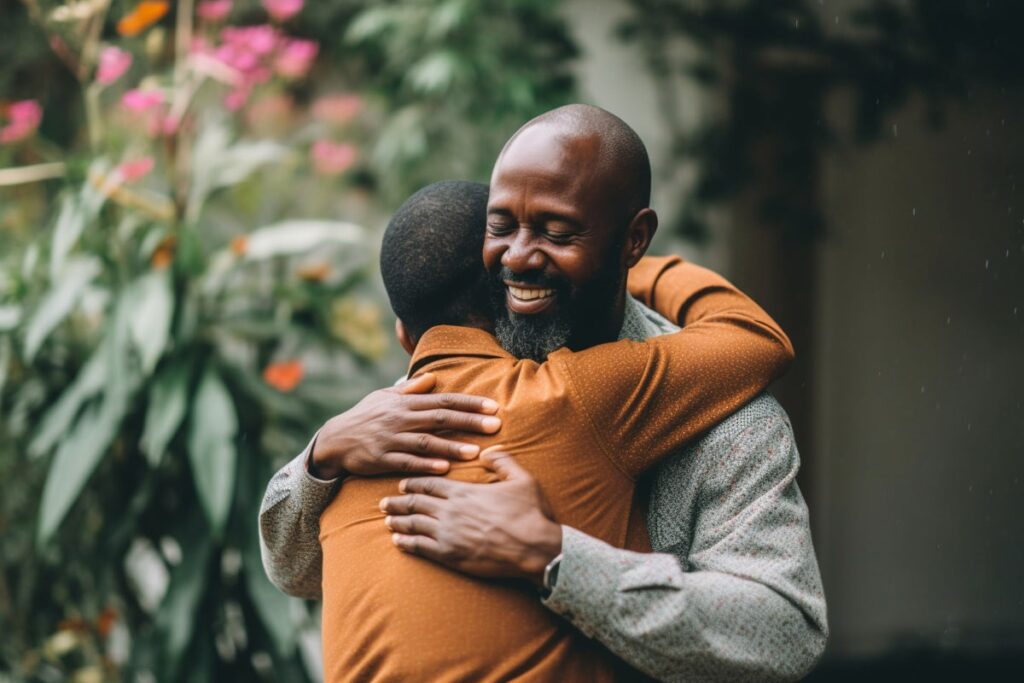The very essence of human life is built on the pillars of connections and relationships. Deep understanding and effective communication serve as the foundational elements that bolster these relationships and create an inclusive environment.
When it comes to individuals grappling with anxiety, the importance of understanding and communication is heightened even further. Anxiety can create a cloud of uncertainty over interactions, often leading to misunderstandings and misconceptions.

Reputable resources such as jacksonhousecares.com offer valuable insights and support for managing this complex emotional landscape. This article extends this support by exploring various ways to nurture connection and communication, serving as a guiding anchor for individuals facing the challenges of anxiety.
The impact of anxiety on relationships.
The manner in which anxiety influences relationships varies based on the severity of the case, the nature of the relationship, and the coping mechanisms of the individuals involved. Below are some ways in which anxiety can affect relationships:
- Avoidance and withdrawal: One of the primary ways anxiety manifests is through avoidance. Individuals with anxiety might avoid social situations, leading to decreased participation in shared activities or events. This can result in feelings of isolation or distancing in the relationship.
- Miscommunication and misunderstanding: Anxiety can lead to overthinking and overanalyzing situations, causing individuals to misconstrue or misinterpret the words or actions of others. This can lead to unnecessary conflicts or misunderstandings in a relationship.
- Increased sensitivity: Individuals with anxiety often have heightened emotional sensitivity. They might react more intensely to comments, criticisms, or situations, leading to potential conflicts or strain in relationships.
- Dependency: In some cases, anxiety can lead to increased dependency on a partner or loved one. The individual might seek constant reassurance or validation, making the partner feel overwhelmed or pressured.
- Physical and emotional fatigue: Chronic anxiety can lead to physical and emotional exhaustion. This fatigue can reduce an individual’s capacity to participate in shared activities or engage in emotional intimacy, affecting the relationship dynamics.
- Overprotectiveness: Out of concern, a partner might become overly protective or controlling, trying to shield the anxious individual from potential triggers. While well-intentioned, this can sometimes lead to feelings of being smothered or restricted.
- Sexual intimacy issues: Anxiety can influence an individual’s libido or cause performance anxiety, leading to challenges in maintaining a healthy sexual relationship.
- Trust issues: Anxiety, especially when linked to past traumas or negative experiences, can lead to trust issues in relationships. Doubts, fears of abandonment, or insecurities might get amplified, affecting the bond between partners.
While anxiety has the potential to introduce challenges into relationships, with understanding, communication, and professional support when needed, many couples and partners find ways to navigate these challenges and cultivate stronger bonds.
Nurturing connection and communication.
As the challenges of anxiety cast shadows, nurturing genuine connections and fostering open communication becomes paramount. Here are some insights and strategies that can improve resilience and understanding in the face of anxiety’s complexities.
1. Prioritize self-care.
In the pursuit of understanding and supporting a loved one with anxiety, it’s easy to neglect one’s own well-being. However, to effectively nurture connections and foster communication, self-care becomes imperative. A stronger foundation for support is established by ensuring one’s emotional and physical well-being.
Begin by understanding the importance of self-care; it’s not an indulgence but a necessity. Regularly engage in activities that rejuvenate both mentally and physically, be it reading, exercising, or practicing meditation.
Sharing these self-care routines can also be beneficial. When both individuals invest time in self-care, they’re better equipped to handle challenges, ensuring a harmonious relationship dynamic.
2. Embrace vulnerability.
Vulnerability, often misconstrued as a weakness, is, in fact, a strength when it comes to relationships. Embracing vulnerability means allowing oneself and others to be seen in authentic lights—with all fears, anxieties, hopes, and dreams.
For someone with anxiety, sharing their fears and concerns requires immense courage. When this vulnerability is met with acceptance and understanding, it deepens trust. Start by encouraging open-hearted conversations where feelings are laid bare. This raw authenticity paves the way for a more profound connection, bridging the gap that anxiety might have created.
3. Set boundaries.
Though often misinterpreted as barriers, boundaries are essential tools for preserving mental well-being. Certain topics or situations might act as triggers for someone with anxiety, intensifying their distress.
Recognizing and establishing clear boundaries is the first step. This involves transparent communication about what is comfortable and what isn’t. By having this dialogue, the individual not only secures a safe space for themselves but also equips others to understand and respect these limits.
Ultimately, setting boundaries is a testament to mutual respect. It ensures that connections remain healthy and communications stay productive, positive, and nurturing.
4. Establish regular check-ins.
Consistent communication is vital. By establishing regular check-ins, a routine of open dialogue is cultivated. These don’t necessarily have to be formal or lengthy. Simple questions like “How was your day?” or “How are you feeling about it?” can be significant. These regular interactions ensure that both parties are updated about each other’s mental and emotional states.
Knowing that there’s a dedicated time to express themselves can be reassuring for someone with anxiety. These check-ins act as touchpoints, ensuring that both individuals are aligned, understood, and supported, fostering a nurturing relationship environment.
5. Educate and empower.
Understanding the nuances of anxiety is a pivotal initial step in nurturing connections. Anxiety manifests differently for everyone, and knowing its multiple facets can lead to deeper understanding and empathy.
Invest time in reading books, articles, and scientific journals about anxiety. Attending workshops or seminars can also be immensely beneficial. These events often bring in experts who share actionable strategies and insights to help understand and manage anxiety. Finally, engaging in open discussions with loved ones or support groups fosters a culture of understanding.
Such conversations empower the individual grappling with anxiety and equip their close circle to approach situations with compassion and empathy.
6. Suggest digital detox.
Screen interactions often overshadow genuine human connection. The plethora of resources offers invaluable insights into anxiety management. However, balancing digital consumption is pivotal.
Begin by designating ‘tech-free’ zones or hours at home, ensuring that these periods are dedicated solely to face-to-face interactions. This approach facilitates genuine conversations, free from digital distractions.
The importance of physical presence cannot be emphasized enough. Being physically present, without the constant pings and notifications, not only nurtures deeper connections but also aids in fostering genuine, heartfelt communication.
7. Listen actively.
Active listening transcends beyond just the auditory process and dives deep into the realm of genuine understanding. The first layer of active listening involves being physically and mentally present, absorbing every word without formulating a response instantly. This attentive presence signals genuine care and respect.
Furthermore, it’s vital to acknowledge the other person’s emotions, which can be especially cathartic for someone with anxiety. Offering a simple nod, maintaining eye contact, or mirroring emotions can go a long way.
Ultimately, creating a space free from judgment can foster deep-seated trust and make the individual feel valued and heard.
8. Engage in joint activities.
Embarking on shared experiences is a conduit to stronger connections. These activities act as a distraction from the cacophony of anxious thoughts.
For starters, simple activities like walking, painting, or gardening together can offer a respite from daily stresses. These shared moments become a canvas for organic conversations, allowing both individuals to open up and communicate seamlessly.
Furthermore, activities like attending therapy sessions or support groups together provide dual benefits: therapeutic insights and shared experiences. Such joint ventures evolve into meaningful memories that cement the bond of understanding and companionship.
9. Practice patience and persistence.
Navigating relationships with individuals battling anxiety is akin to treading a path interspersed with challenges. Moments of withdrawal, silence, or misunderstandings are inevitable. However, instead of perceiving these as roadblocks, they should be viewed as growth phases.

The first step in this journey is patience. Realizing that healing and understanding aren’t linear ensures realistic expectations. Also, celebrate every small victory, be it a candid conversation or a day free from anxiety’s grasp.
Persistence is the key. By consistently striving to understand and support, even amidst setbacks, one lays down the bricks for a robust, understanding relationship.
10. Seek professional guidance.
The maze of emotions that anxiety brings can sometimes be overwhelming. In such intricate scenarios, professional intervention becomes invaluable. Therapists and counselors, fortified with experience, offer personalized strategies tailored to individuals and their unique experiences.
Initially, recognizing the need for external help and seeking it is paramount. Once engaged, these professionals provide tools, techniques, and coping mechanisms to better manage anxiety and improve communication.
Furthermore, many therapists offer group sessions, enabling families or partners to learn and grow together. This collective journey of understanding, aided by professional guidance, often becomes the catalyst for strengthening connections and fostering profound understanding.
Conclusion.
The journey of nurturing connections and communication in the face of anxiety is a delicate dance of understanding, patience, and effort. Practicing these strategies can create a supportive environment for individuals with anxiety. Relationships, when nurtured with care and empathy, can become the strongest pillars of support and understanding.

